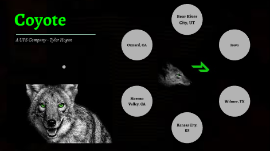Site Presentation
Transcript: To our group, Ile de le Cite means that without the preservation of architecture there can be no future. If Ile de le Cite never had settlers, taken over by the Roman and never became a safe haven from invaders there would be no Notre Dame or Pont Neuf. Both of these marvels are world renowned, if they were not preserved throughout the years life as we know it would be different. There would be no spreading of ideas, the culture of Paris would not be the same thus we would not have wonderful influences like Ernest Hemingway or Pablo Picasso. Focal point of Ile De Le Cite Show heavy influence of naturalism Has faced considerable damage throughout the years Considered one of the finest examples of French Gothic Architecture .The Notre Dame Cathedral is the actual cathedral of the Catholic archdiocese of Paris: which is to say, it is the church which contains the official chair ("cathedra") of the Archbishop of Paris, Andre Cardinal Vingt-Trois. The Cathedral of Notre Dame is probably best known for its relation to the story of the Hunchback of Notre Dame, made famous by the numerous cartoons and movies inspired by it. History of Ile De Le Cite Gabi, Tristen & Morgan A small, quaint park located in Ile De Le Cite Very low traffic and visitors are cautioned to keep the space quiet and non-touristy. Founded by a Gallic tribe called the Parisii in 1607 after orders from Henry IV, and it has always been the very center of Paris. In the 18th century, the artists Boucher and Chardin used the area to exhibit paintings. If you walk through the west gate you will find yourself facing an equestrian statue of Henry IV. The Pont Neuf Bridge is located in Place Dauphine and on top of the bridge is known to be the best view of the park What can this place tell us about what it means to live in Paris? Pont Neuf meaning the “New Bridge” is the oldest bridge in Paris King Henry III decided to construct a new bridge in 1578 because the bridges on the Seine were overcrowded and out of shape. It was the first bridge that was built for vehicle transport in Paris. All other bridges were considered too narrow and outdated. It was a center where the rich and poor would meet and social class did not matter. Parisians were able to be true to themselves after years of religious control. Bouquinistes which are booksellers can still be found on the island. Besides books they also sell souvenirs and trinkets. Conciergerie Site Presentation: Ile De Le Cite Our group chose Ile De Le Cite because it is dynamic and there is a lot to learn about. Many of the important and iconic landmarks, which were discussed in this presentation are located here. Learning about Ile De Le Cite will make our experience in Paris that much more exciting when we get to visit. Original site of the Parisi tribes Believed that the earliest settlement in Paris was on this island 52 AD the settlement was rebuilt as the Roman city of Lutetia by Julius Cesar. Residents of the city sought refuge at the island from attacks by Nomadic tribes like the Huns During Merovingian times (5th to 8th century A.D.), a palace was built at the western end of the island making it an important political center throughout the Middle Ages A predecessor to the Notre Dame Cathedral was erected in 10th century Pont Neuf Bridge was built by King Henry III in 1578, it is considered the oldest bridge In the 14th century the Conciergerie was originally called the Palais de la Cité which was a palace for the royals of France. In 1391, the French royals moved out of the palace and part of it turned into a prison for the poor and wealthy of France. One of the most well-known prisoners was Marie Antoinette, Queen of France. The room where Marie Antoinette spent her last days has been transformed into a small chapel. The Conciergerie has been turned into a historical monument where travelers from all over the world come to visit. Notre Dame Île de la Cité is considered the heart and soul of Paris. The first settlers started off on the small island of the Seine River and it is considered the oldest district in Paris. Île de la Cité has been able to preserve its history and romance throughout the ages. This truly tells us about the strength and sustainability of Parisian culture. A Paris Guide: Ile de la Cit. (n.d.). Retrieved November 16, 2016, from http://www.aparisguide.com/ile-de-la-cite/ Brand, C. (2016, September 26). The Top 10 Things To Do On Île de la Cité In Paris. Retrieved November 26, 2016, from https://theculturetrip.com/europe/france/paris/articles/the-top-10-things-to-do-and-see-on-the-le-de-la-cite/ Ermengem, K. V. (n.d.). Île de la Cité, Paris. Retrieved November 16, 2016, from http://www.aviewoncities.com/paris/iledelacite.htm Notre Dame Cathedral Paris. (n.d.). Retrieved November 26, 2016, from http://www.notredamecathedralparis.com/ History of Place Dauphine in Paris. (n.d.). Retrieved November 26, 2016, from

















